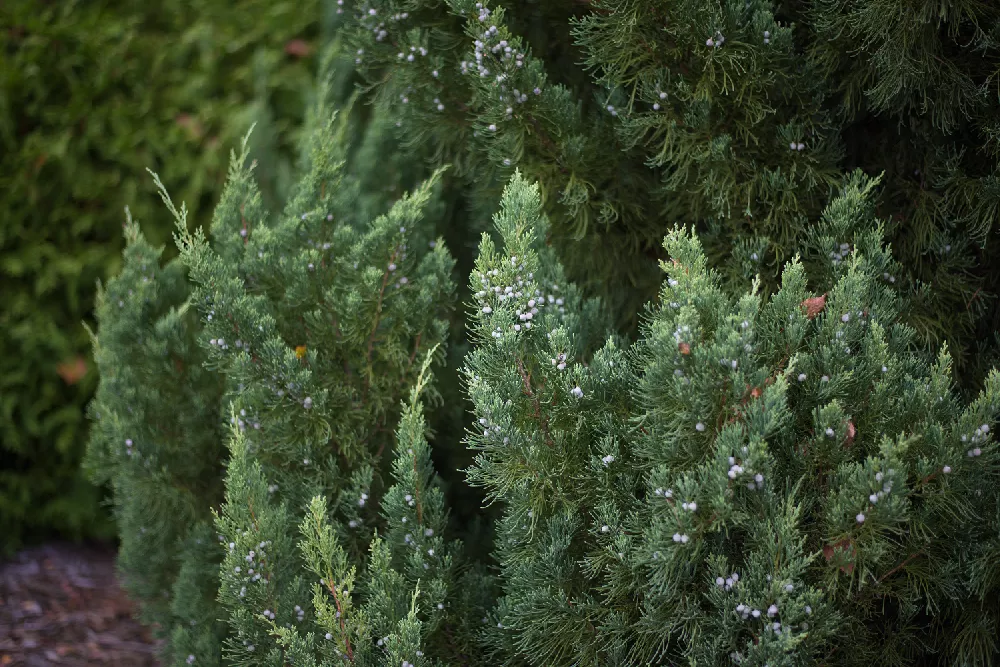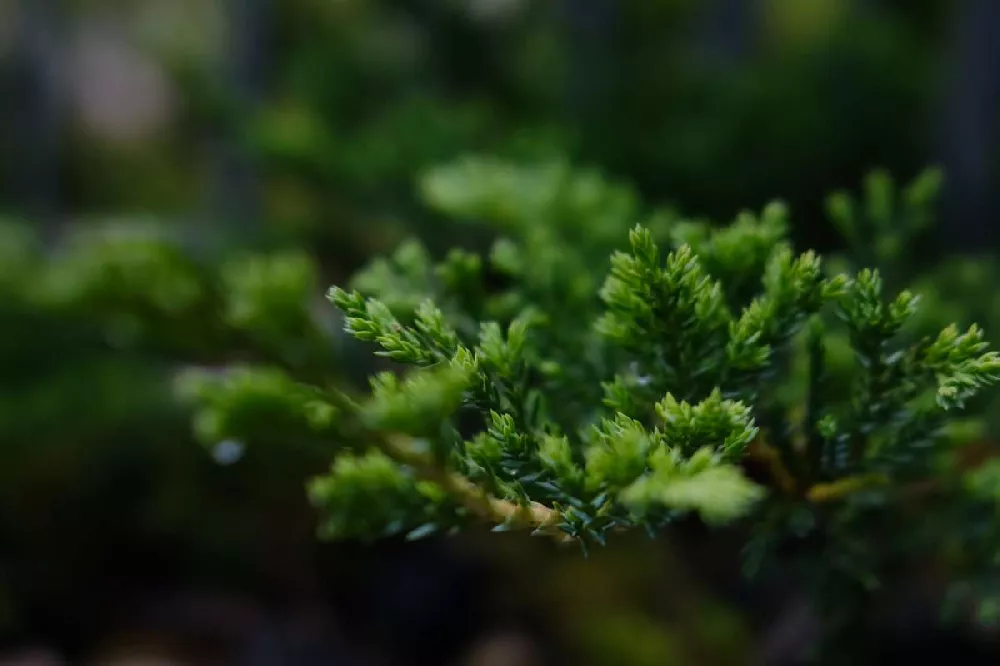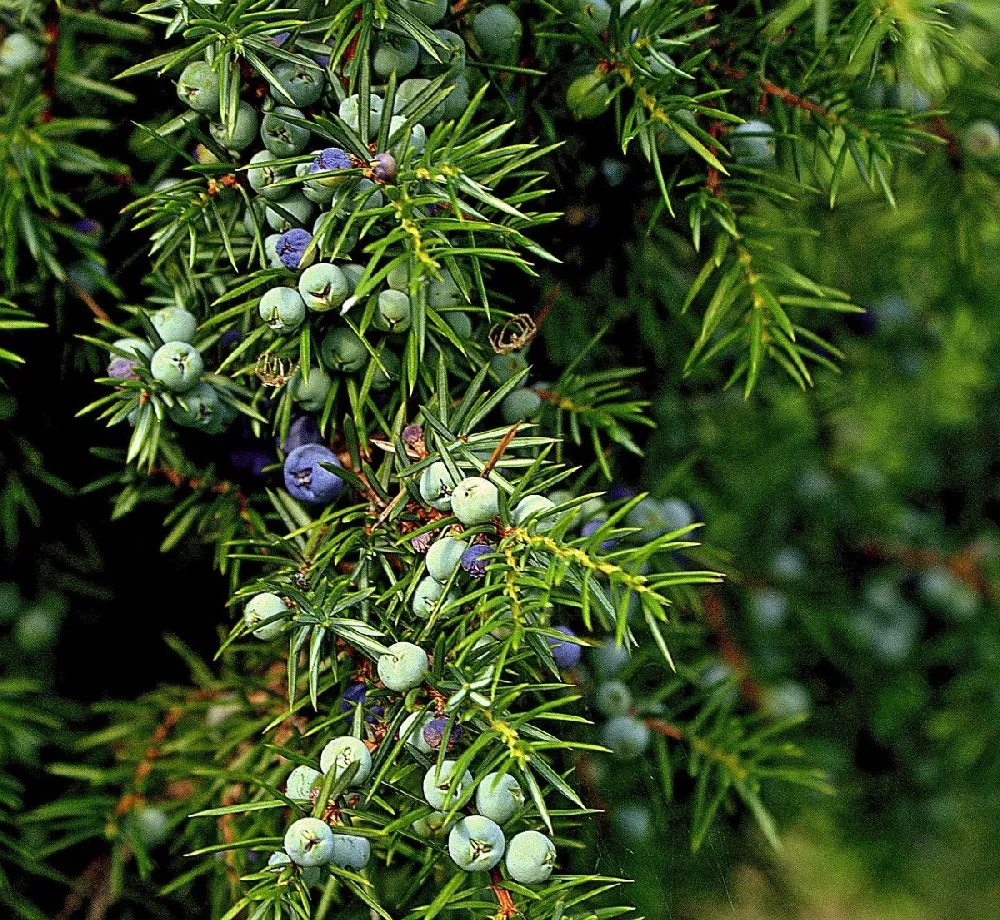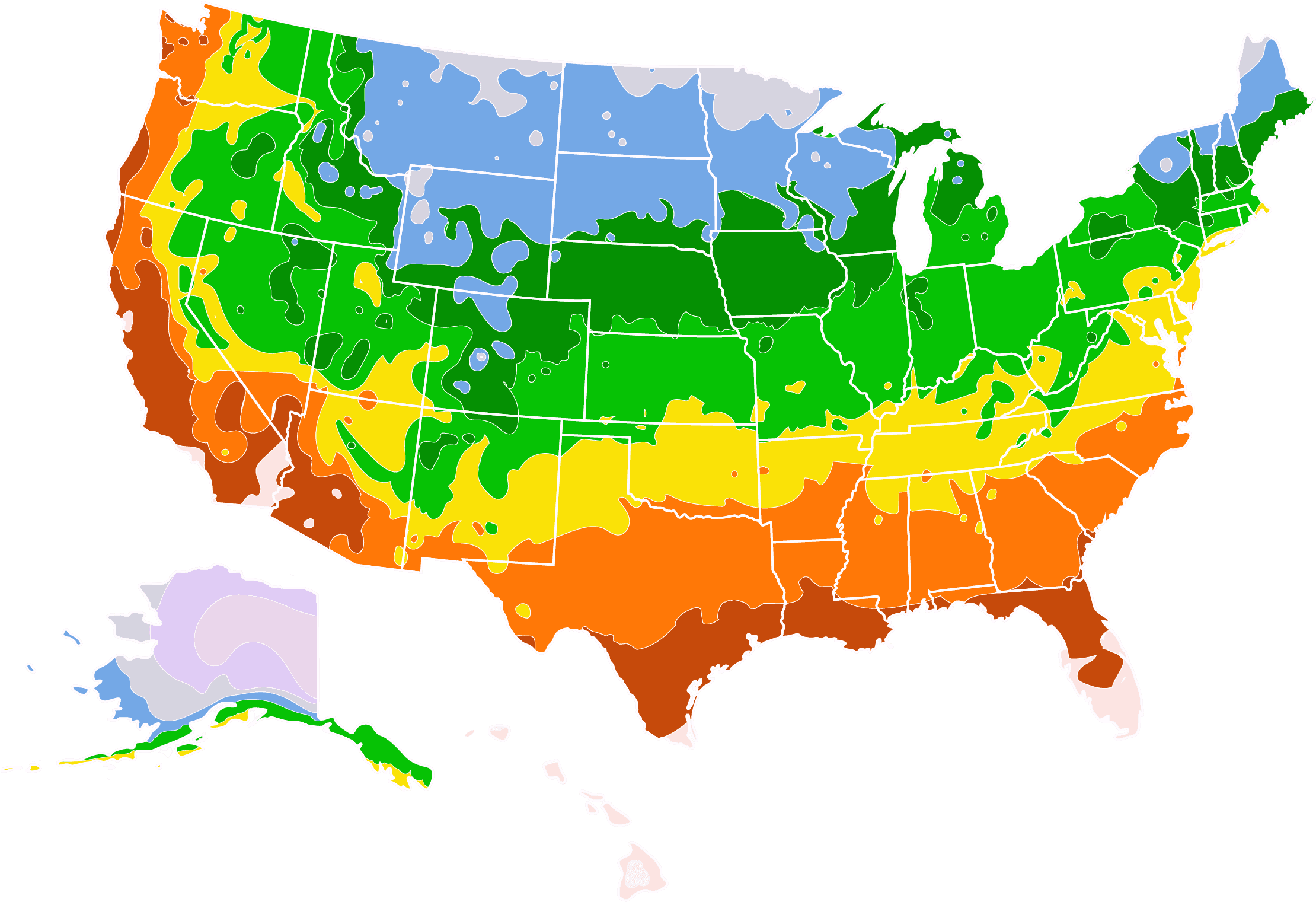- Home >
- Evergreen Trees >
- Blue Point Juniper
Blue Point Juniper for Sale - Buying & Growing Guide
- Ships in 1-2 days
- 1-Year Warranty Eligible
- Pots or accessories are not included unless specified in the product options.
Shipping Details:
Once your order is shipped, you’ll receive an email with a tracking number and estimated delivery date. Most orders ship immediately, but some items are seasonal and may only ship in spring or fall. These products are noted on the website.
The Blue Point juniper, Juniperus chinensis 'Blue Point', is a versatile, easy-care plant that adds verticality to your garden or landscape. Its blue-green foliage forms a dense, pyramidal bush that maintains its shape with little to no pruning. Easily grown in the ground throughout most of the contiguous U.S., the Blue Point juniper also adapts well to container growing and can nicely frame a doorway or gate in an ornamental pot. The Blue Point juniper is an excellent choice for a windscreen or privacy hedge, and its mature height of 4 to 12 feet does not overwhelm the garden. Here are a few more reasons to consider a Blue Point juniper for your property:
- Dense evergreen foliage provides interest in the winter garden.
- Although it needs no pruning to retain its shape, it can be formed into a formal topiary with careful trimming.
- Deer- and smog-resistant; can be planted near roads or in urban settings without problems.
Plant Care
Sunlight

The Blue Point juniper thrives in full sun — eight hours or more of direct light a day.
Watering
Once established, mature Blue Point junipers need supplemental watering only during droughts and heat waves.
Fertilizing

Feed with a product designed for evergreens in the early spring, before new growth appears.
Planting and Care
Planting instructions
Choose a site for your Blue Point juniper that receives full sun, with soil that drains well. Junipers aren’t fussy about soil types, though they prefer a slightly acidic soil. Unpot your bush, teasing out any encircling roots, which can girdle the plant and eventually kill it. Dig a hole that’s as deep as the root ball and twice as wide, and place the bush in the hole. Holding it upright, fill in around it with a good quality topsoil, tamping down as you go to eliminate air pockets. Water thoroughly. Place a 2- to 3-inch layer of an organic compost, such as bark chips, around the root zone to conserve moisture, but keep it from touching the trunk.
Watering and nutrients
During its first year, water your Blue Point juniper a few times a week while it’s getting established. Once you see robust new growth, you can taper back on supplemental watering. After that, your bush should only need water when you’re experiencing drought or high temperatures. Fertilize with a slow-release product that is designed for evergreens in early spring, or as package directions indicate.
Pollination
As conifers, Blue Point junipers don’t produce true flowers. Instead they have bracts, which form cones. Junipers are dioecious, meaning that male and female reproductive parts are on different plants. Birds are attracted to the small, inconsequential berries that result when bracts are pollinated.
Pruning
Pruning a Blue Point juniper isn’t necessary except to remove broken or diseased branches, which can be trimmed out whenever you see them. If you prefer the look of a manicured topiary, you can prune for a specific shape other than the tree’s natural pyramid. Avoid pruning in very hot or cold weather to limit stress to the plant.
Pests, diseases, and animals
Few diseases or pests bother these easy-to-care-for bushes. Once in a while you may see aphids, mites, or scale insects. These can all be treated with horticultural oil. If you see small, round galls on twigs, this may be cedar apple rust. Prune out the infected branches and apply a fungicide. Japanese apple rust leaves bright orange spots on the foliage and twigs; this disease can also be treated with a fungicide.
Achieving maximum results
A little creativity can go a long way when you have one or more Blue Point junipers. They can provide stunning focal points throughout your yard, and their symmetrical nature makes them perfect for framing doors, windows, or flowering displays. If you’re using these junipers to create a hedge, plant them about 6 feet apart — they will grow together to form a screen without crowding themselves. A juniper hedge makes a great backdrop for ornamental trees such as flowering cherries. If planting in a container, use one that is twice the size of your bush’s root ball, and keep an eye on its watering needs, which will be greater than for bushes planted in the ground.
FAQs
How hardy is a Blue Point juniper?
Blue Point junipers, like most junipers, are quite sturdy and grow well throughout most of the U.S. They are deer-resistant and are not bothered by road salt or smog, so they are a good choice for urban gardens. They are prone to very few pests and diseases, and if they are planted in a good, sunny spot and given minimal care, they should provide years' worth of enjoyment.
Are juniper berries toxic?
Although juniper berries have been used in the past for medicinal purposes as well as in cooking, they have a bitter flavor and can cause stomach upset. They contain a substance called thujone, which causes kidney disease when eaten in large quantities. The berries and leaves are also toxic to dogs and cats. Your best bet is to leave the berries for songbirds, who will thank you for the feast.
Can Blue Point junipers be planted near buildings or walkways?
Yes, they can. Blue Point junipers make excellent foundation plantings, designed to hide the lower part of your house and add interest without risking any upheaval from invasive root systems. Plant your junipers 3 to 6 feet away from the foundation, and avoid windows, since the eventual height of the plant would block the window.
Compare Similar Products
You can't add more Product Name - Product size to the cart.
OK







